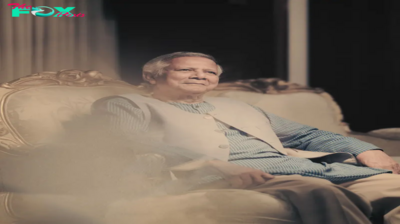World News
The Long, Strange History of Secret Royal Ailments
Unless you’ve been underwater, or in space, for the past few weeks, there is no way that you can have avoided the fantastical stories that have proliferated about the British royal family. After the simultaneous announcement on Jan. 17 that Kate Middleton, the Princess of Wales, and King Charles would both be receiving hospital treatment—her for an unspecified “abdominal complaint” and he, initially, for an enlarged prostate—interest in both has only grown, thanks to the revelation that the king is now being treated for an unspecified form of cancer and with the princess’s continued absence from public view.
This grew to fever pitch when a picture put out of her and her children on March 10, intended to dispel conspiracy theories, only made them proliferate when the image was withdrawn from circulation because it had been edited in some Mysterious fashion. A subsequent statement from the princess on social media—“Like many amateur photographers, I do occasionally experiment with editing. I wanted to express my apologies for any confusion the family photograph we shared yesterday caused”—only made her, and the Kensington Palace press operation, look more ridiculous. Even her apparent public reappearance on March 17 at a farm shop near the princess’s home—complete with suspiciously useful public photos and videos—has not silenced the rumors, which have proliferated wildly. Many say that the royals should have stuck to their time-honored dictum of “never complain, never explain.” It has served them well in the past, even if their silence could be interpreted as being positively misleading, if not actively dishonest.
Certainly, British monarchs have not always been pictures of Health. Henry VIII was grotesquely overweight and riddled with leg ulcers, diabetes, and hypertension, and Charles II apologized for being “an unconscionable time dying” after suffering a fatal apoplectic fit. Edward VII, the so-called “Edward the Caresser,” was afflicted with severe bronchitis, and the cause of George III’s mental illness is still Mysterious, even today. More recently, the Queen Mother was afflicted with cancer twice, once in her 60s and once in her 80s, but the news was kept from the public until well after her death in 2002.
Yet it was the decline in the Health of Charles’s grandfather George VI that forms perhaps the most affecting strand in my latest book about the Windsors, Power and Glory. He was never a hearty man, being affected by a crippling stutter and debilitating gastric problems. He never wanted to become king, a situation forced on him in 1936 by the abdication of his elder brother Edward, and although he was a steady and reassuring presence throughout World War II, the exertion all but finished him. As his official biographer John Wheeler-Bennett put it, “his temperament was not one which facilitated a rapid replenishing of nervous and physical reserves.”
By the beginning of 1948, George VI’s Health had taken a turn for the worse. He began to complain of severe cramp and numbness. He was suffering from Buerger’s disease, which had been brought on by his heavy smoking, making it difficult for him to walk. By August, he was said to be “in discomfort most of the time,” violently kicking his foot and leg against his desk, in a vain attempt to restore circulation despite his ailment. Professor James Learmouth, Regius Professor in Clinical Surgery, diagnosed arteriosclerosis, brought on by years of heavy smoking, and suggested that it was possible that his right leg would need to be amputated. Yet the press were merely told that “the King was suffering ‘from an obstruction to the circulation through the arteries of the legs,’” and that this had “only recently become acute.
In 1949, the King knew that he would be an invalid for the rest of his life. On March 2, he underwent a grueling procedure: a right lumbar sympathectomy operation, intended to restore blood supply to his leg by cutting a nerve at the base of the spine, and therefore give him a degree of movement again. It was a success, and by July George was able to perform investiture ceremonies, leading those around him to hope he was recovered. Yet in the early summer of 1951, X-rays indicated that he had cancer on his left lung. To avoid worrying him, he was told that it was pneumonitis, a less serious form of pneumonia, and the euphemism “structural changes” was deployed. He eventually had to have his lung removed, on Sept. 23, 1951, which he bore stoically, saying “if it’s going to help me get well again I don’t mind but the very idea of the surgeon’s knife again is hell.”
The procedure seemed to be successful at first, and a bulletin was released to the public that “The King underwent an operation for lung resection this morning. Whilst anxiety must remain for some days, His Majesty’s immediate post-operative condition is satisfactory.” But those around the monarch knew that it was impossible for him to make a full recovery. His Health appeared to stabilize for a short time at the beginning of 1952, allowing his daughter Princess Elizabeth and Prince Philip to head off on a planned state tour of Australia; they never made the trip, as they were recalled from Kenya after the king died in his sleep on the night of Feb. 5. In the end, he did not die of cancer, but of a coronary thrombosis; the blood clots that had affected him for years proved fatal.
George VI’s death proved an enormous shock to the British nation, and worldwide; President Truman, who had met and liked the monarch, privately said of him that “he was worth two of his brother Ed.” His 25-year old daughter Elizabeth soon acceded the throne, and her reign was a great success, allowing the monarchy to shine in ways that it had never done before. Yet she was someone who believed, in the words of Walter Bagehot, that “Above all things our royalty is to be reverenced, and if you begin to poke about it you cannot reverence it… Its mystery is its life. We must not let in daylight upon magic.”
It is this dedication to tradition—some would say obfuscation—that continues to preoccupy the royal family to this day. Yet amid the tittle-tattle and rumor, some may argue that the only way that magic can be maintained in the 21st century is to let in rather more daylight than the previous queen and king may have contemplated. They may well have a point.
-

 World News2d ago
World News2d agoLandmark Bill to Ban Children From Social Media Introduced in Australia’s Parliament
-

 World News2d ago
World News2d agoAmerican and Australian Tourists Die in Laos After Drinking Tainted Alcohol
-

 World News3d ago
World News3d agoSee Photos of the Seventh Volcanic Eruption on Iceland’s Reykjanes Peninsula in 12 Months
-

 World News3d ago
World News3d agoMuhammad Yunus on the Race to Build Bangladesh 2.0
-

 World News3d ago
World News3d agoU.S. Charges Indian Billionaire Gautam Adani With Defrauding Investors
-

 World News3d ago
World News3d agoU.S. Vetoes U.N. Resolution Demanding a Cease-Fire in Gaza
-

 World News3d ago
World News3d agoPutin Signs New Doctrine Lowering Nuclear Weapons Threshold in Warning to U.S.
-

 World News3d ago
World News3d agoTens of Thousands Rally at New Zealand’s Parliament in Support of Māori Rights



























